When it comes to recording music, one of the decisions that must be made is whether to use mono or stereo recording techniques.
Both techniques have their advantages and disadvantages.
In today’s blog post, you’re going to learn what the difference is, which one is better, the benefits and drawbacks for both formats, and more…
Let’s get started.
Should I Record In Mono or Stereo?
Whether you record your instruments and vocals in mono or stereo will depend on the context and goals of the project(s) you’re currently working on.
But in this guide, I want to help you make an educated decision every time you’re recording so that you capture the best signal all the time.
Let’s start by examining the difference between the two formats.
The Difference Between Mono vs Stereo Recording
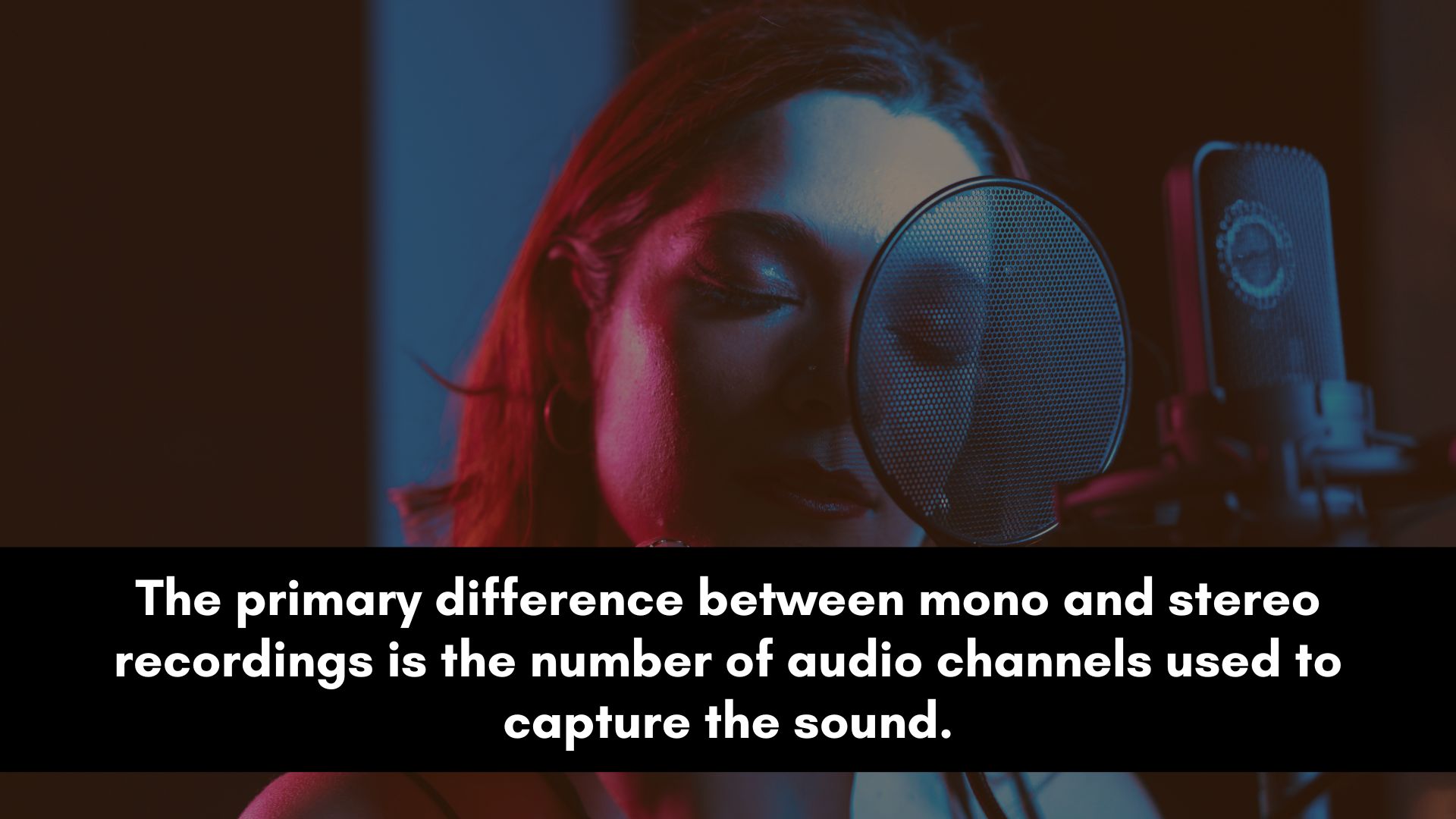
The primary difference between mono and stereo recordings is the number of audio channels used to capture the sound.
Mono recording involves capturing a single audio channel, which represents a single source of sound.
This means that the same signal is sent to both the left and right speakers when the recording is played back.
Mono recording is often used for vocals, bass, and other elements that are meant to be heard as a single sound source.
Stereo recording, on the other hand, captures two or more audio channels, which are then used to create a sense of space and dimensionality in the recording.
The most common stereo configuration uses two microphones to capture the sound from different positions in the room, with the left and right channels representing the sound from each microphone.
Stereo recording is often used for music recordings, field recordings, and other situations where a wide and dynamic listening experience is desired.
The Benefits of Recording in Mono
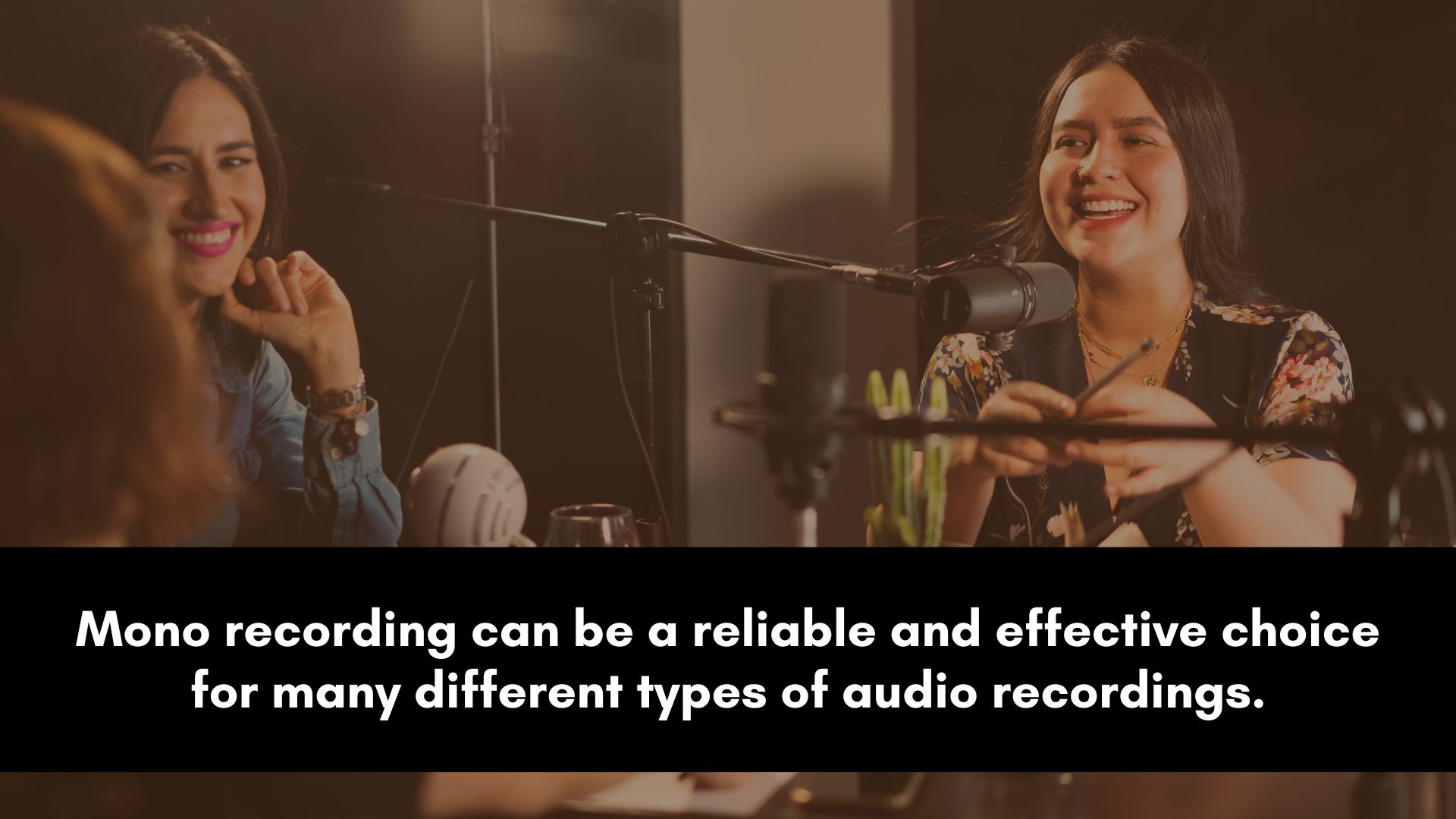
Recording in mono, or with a single audio channel, can offer several benefits over stereo recording in certain contexts.
- Clarity and Focus: Mono recording can provide a clear, focused sound that is especially important for recording individual instruments, such as bass guitar or vocals. By recording in mono, the sound is captured as a single, unified signal, eliminating the potential for phase cancellation or other sound issues that can arise with stereo recording.
- Compatibility: Mono recordings are widely compatible with a range of playback systems, including mono, stereo, and surround sound. This means that the recording can be easily used in a variety of contexts without any compatibility issues.
- Simplicity: Mono recording can be simpler and more straightforward than stereo recording. Because it only involves capturing a single audio channel, the setup and recording process can be more streamlined, making it a faster and more efficient option.
- Easy Mixing: Mono recording can also make mixing and post-production easier since there is only one audio channel to work with. This can save time and reduce the risk of making mixing mistakes.
- Consistency: Since mono recording captures a single audio channel, it can provide a more consistent sound across different playback systems and environments. This makes it a reliable choice for situations where sound quality and consistency are important, such as in radio broadcasts or podcast recordings.
Mono recording can be a reliable and effective choice for many different types of audio recordings.
The Disadvantages of Recording in Stereo

While stereo recording can provide many benefits, it also has some potential disadvantages, including complexity, phasing issues, mixing challenges, compatibility issues, and recording environment limitations.
- Complexity: Stereo recording can be more complex than mono recording. This is because it involves capturing multiple audio channels, which can require more equipment, setup, and attention to detail during the recording process.
- Phasing Issues: Recording in stereo can be susceptible to phasing issues, which occur when sound waves from different sources combine and create interference patterns. This can result in a hollow, phasey, or otherwise unnatural sound that can be distracting or unpleasant.
- Mixing Challenges: Stereo signals can be more challenging to mix than mono recordings. This is because they require careful balancing and placement of the different audio channels to create a cohesive and balanced mix. Improper mixing can result in an unbalanced or unclear sound, which can detract from the overall listening experience.
- Compatibility Issues: Stereo may not be compatible with all playback systems. For example, some older playback systems may not be able to playback stereo recordings or may only reproduce one channel of the recording.
- Recording Environment: In order to capture true stereo, the recording environment must have a sense of spatial depth and separation. This means that it may not be ideal for recordings made in acoustically challenging environments, such as small or untreated rooms.
However, many of these issues can be mitigated through careful recording and mixing techniques, making stereo recording a powerful tool for creating immersive and dynamic audio recordings.
FAQ About Mono vs Stereo Recording
Now that you know the difference between recording in mono vs stereo, the disadvantages, and the benefits, let’s dive into the most commonly asked questions.
The questions and answers below should help reduce confusion and doubt.
Feel free to add to the list by leaving a comment below.
Let’s gooo…
Do Mono Records Sound Better?
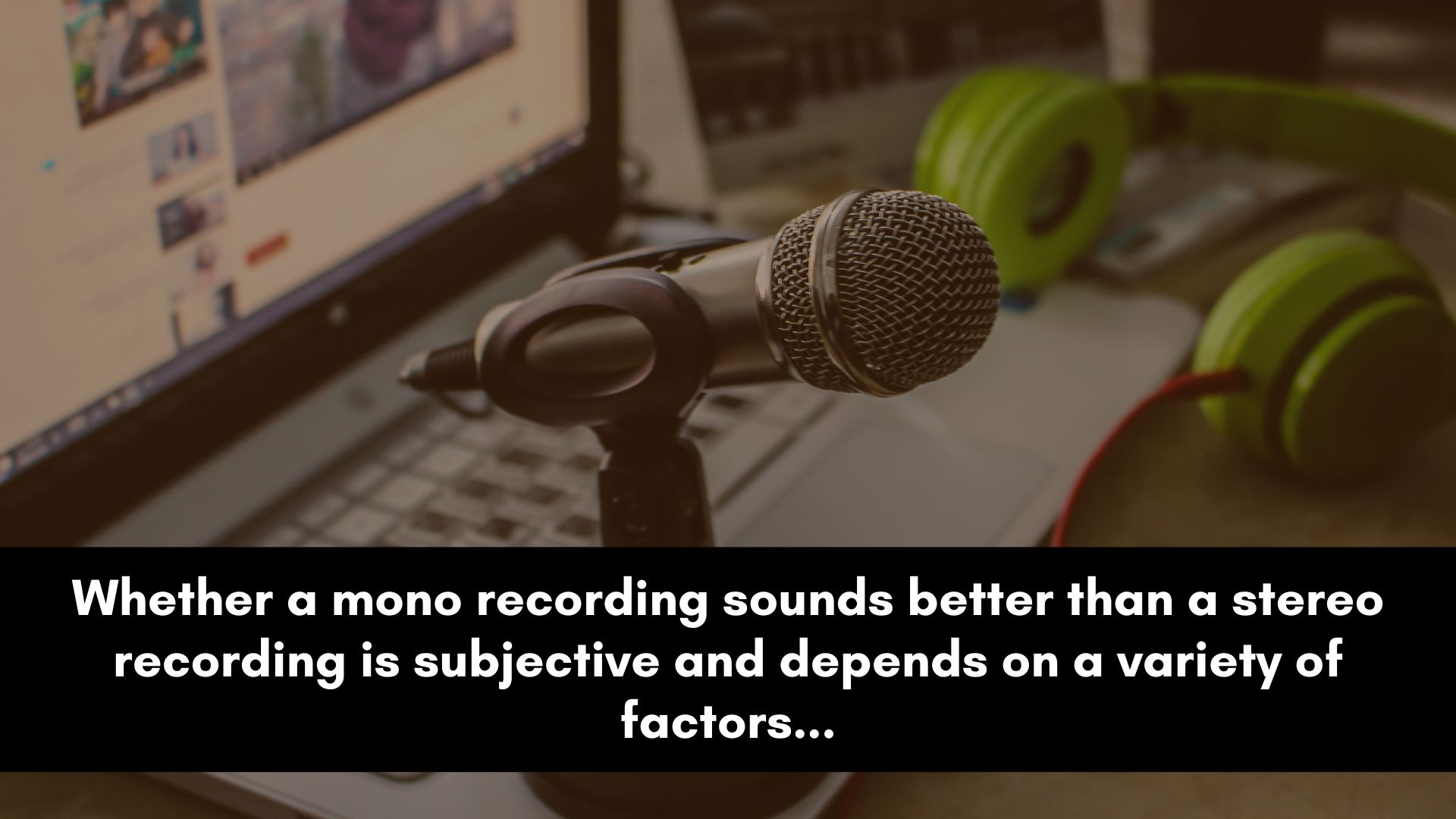
Whether a mono recording sounds better than a stereo recording is subjective and depends on a variety of factors, including the specific recording, the playback system, and personal preferences.
In some cases, a mono recording may be preferred over a stereo recording because it can provide a more focused and centered sound.
This can be especially true for recordings of solo instruments or vocals, where a mono signal can provide an intimate and direct sound that emphasizes the performer's presence and clarity.
On the other hand, stereo recordings can provide a dynamic and 3D sound, with a wider stereo image that can create a greater sense of depth between instruments and performers.
This can be especially true for recordings of larger ensembles or in acoustically rich recording spaces, where stereo recording can capture the full range of the sound and the room ambience.
So, whether a mono or stereo recording sounds better depends on the specific recording, the intended audience, and personal preferences.
The choice of recording technique will depend on the specific goals and requirements of the project.
Do You Need 2 Microphones for Stereo?
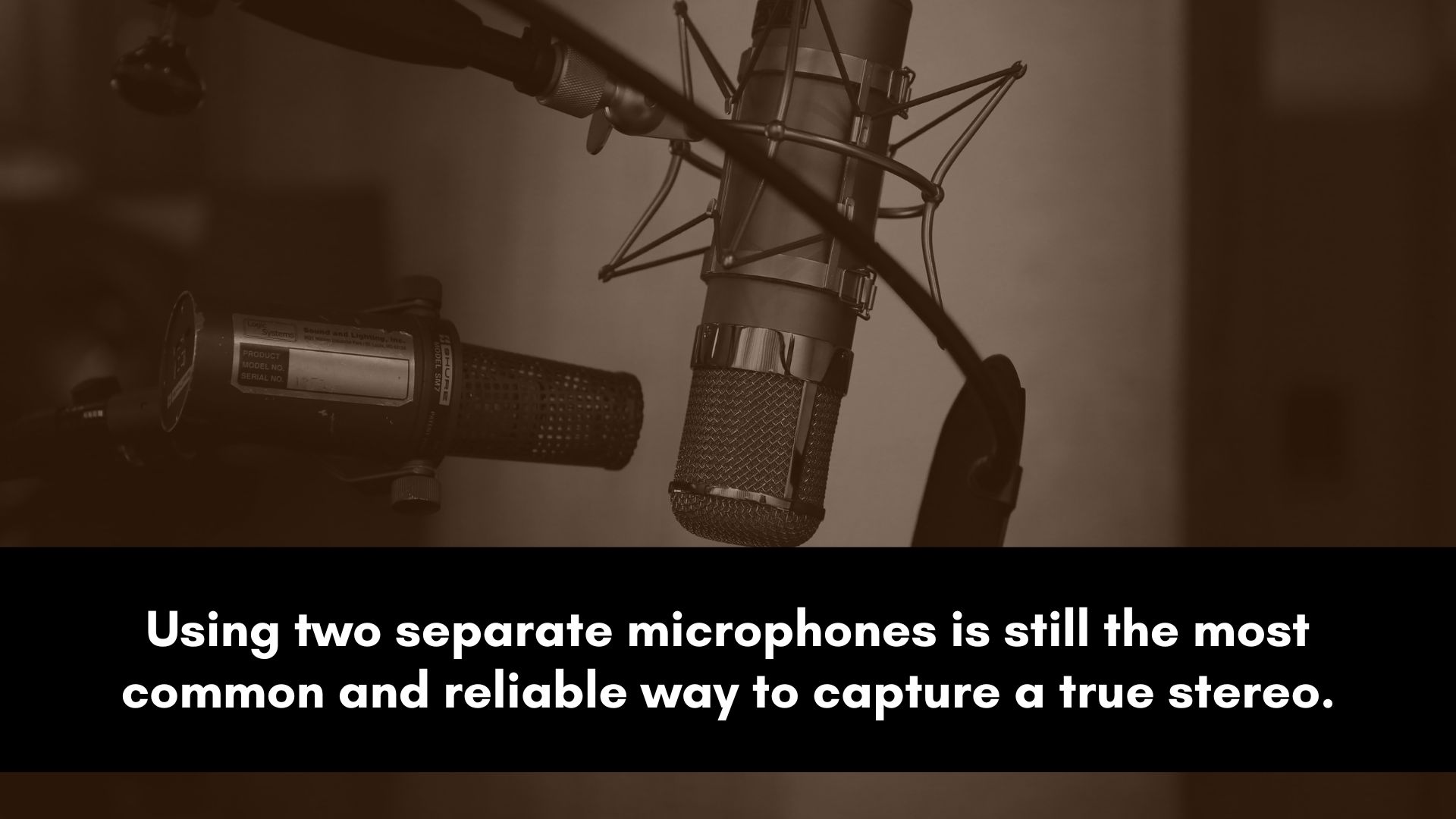
No, you do not necessarily need two microphones to create a stereo recording.
While two microphones are the most common way to capture stereo sound, there are other techniques and equipment that can be used to create stereo recordings with a single microphone.
For example, some microphones are designed to capture a stereo signal rather than two separate microphones.
These mics use techniques such as mid-side (M/S) recording, where a single directional mic is paired with a bidirectional (Figure-8) microphone to capture both the direct sound and the room ambience, respectively.
The two channels are then combined in post-production to create stereo.
Another technique is to use software processing to create a stereo image from a mono recording.
This involves using plugins or other software tools to manipulate the recorded signal and create the impression of stereo separation.
That being said, using two separate microphones is still the most common and reliable way to capture a true stereo image, as it allows for greater control over the positioning and level of each source.
But it's good to know that there are alternative techniques available for creating stereo recordings with different equipment setups.
Is it OK to Record Vocals in Stereo?

While it is technically possible to record vocals in stereo, it is not typically recommended. Vocals are usually recorded in mono, meaning that the sound is captured as a single audio signal.
There are several reasons for this:
- Clarity: When vocals are recorded in mono, they are typically more clear and focused. This is because there is no variation in the sound between the left and right channels, which can help to eliminate any phasing issues that might arise with stereo recording.
- Presence: Mono recording can also help give vocals a more present and intimate sound. By capturing the vocal performance as a single signal, it can be more easily emphasized in the mix, giving it a more upfront and powerful presence.
- Compatibility: Finally, mono recording is generally more compatible with a wider range of sound devices. While stereo recording can create a more immersive listening experience, it may not translate well on all playback systems. Mono recording, on the other hand, is more consistent across different listening environments.
Of course, there are always exceptions to these guidelines.
Some producers and engineers may choose to experiment with stereo vocal recording for creative or artistic purposes.
However, in general, it is typically best to stick with mono recording for vocals in order to achieve the most clear and present sound that will cut through in the mix.
Should Room Mics Be Stereo?
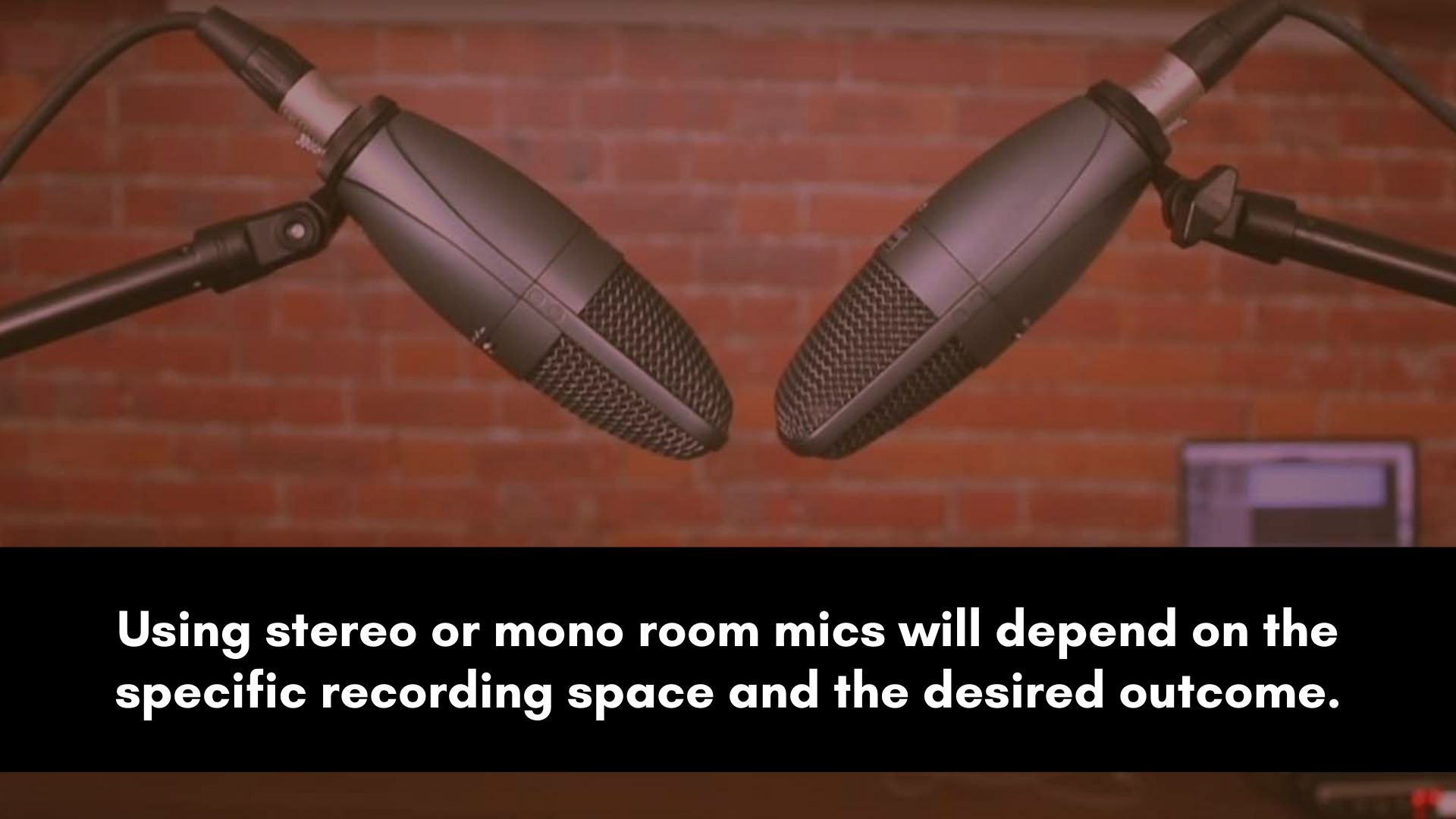
Room mics are often used to capture the ambience and natural reverberation of a recording space.
While there is no hard and fast rule, it is usually recommended to use stereo microphones for room mics, as this can provide a more accurate and immersive representation of the space.
Using stereo room mics allows for the capture of spatial information, such as the width and depth of the recording space, as well as the positioning of instruments and performers within that space.
This information can be used to create a more natural and realistic sound in the final mix, as it gives the listener a sense of being in the same room as the performers.
So, using stereo room mics can provide greater flexibility during mixing, as each channel can be processed independently to adjust the balance and character of the recorded ambience.
This can allow for greater control over the overall sound and tone of the recording.
That being said, there may be some situations where mono room mics are appropriate, such as in smaller recording spaces where the stereo image may be less distinct or in situations where a more focused or directional sound is desired.
The choice of using stereo or mono room mics will depend on the specific recording space and the desired outcome for the final mix.
